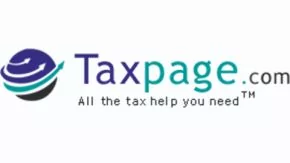Regulation 105: The Hidden Tax Rule for Non-Residents Working in Canada
When non-residents provide services in Canada, a lesser-known but critical piece of tax legislation comes into play: Regulation 105 of the Income Tax Regulations. This rule ensures that Canada collects tax on income earned within its borders, even from those who don't call it home. Whether you're a Canadian business hiring a foreign contractor or a non-resident working temporarily in Canada, understanding Regulation 105 is key to staying compliant and avoiding unwanted tax surprises or penalties.
What is Regulation 105?
Regulation 105 requires anyone paying a non-resident for services performed in Canada to withhold 15% of the gross payment and send it to the CRA. This applies to a broad range of payers, such as Canadian residents, businesses, or even other non-residents, and covers payments like fees or commissions for services such as consulting, repairs, or performances. However, it doesn't extend to payments for goods, employee salaries (covered under Regulation 102), or reimbursements for specific expenses like travel, if properly documented.
The withheld amount isn't the non-resident's final tax bill but acts as a prepayment toward their potential Canadian tax liability. Non-residents must file a Canadian tax return to settle the difference, potentially owing more or claiming a refund if the 15% exceeds their actual tax liability.
Why Regulation 105 Exists – What's In It For The CRA?
Canada uses Regulation 105 to secure tax revenue from income earned within its jurisdiction by non-residents who might otherwise leave the country without settling their tax obligations. The CRA interprets "in respect of services rendered in Canada" expansively, meaning even payments indirectly tied to Canadian work, like fees paid to a non-resident's agent, can trigger withholding. This broad approach ensures tax isn't easily avoided, especially in an era of increasing cross-border work.
Who's Affected by Regulation 105?
The rule targets payments to non-residents, including individuals, corporations, partnerships, or joint ventures, for services physically performed in Canada. Payers must be diligent: if you're paying someone with a foreign address, requesting payment in another currency, or hiring non-resident workers, you're likely on the hook to withhold. Even non-resident payers subcontracting work in Canada must comply, registering for a Canadian Business Number to handle remittances and waivers.
Notably, employee wages fall outside Regulation 105. For example, a non-resident director's fees for services in Canada are treated as salary under Regulation 102, subject to different withholding rules, including graduated rates since 2004, rather than the flat 15%.
Remuneration paid to non-resident employees who provide services in Canada is subject to the same withholding, remitting, and reporting obligations as those for Canadian resident employees. The type of withholding required from payments to non-residents performing services in Canada depends on whether the non-resident is an independent contractor or an employee.
The status of the non-resident as either an independent contractor or an employee is a question of fact and requires legal analysis. It is advisable to consult with an expert Canadian tax lawyer to make a determination if one is not unsure of their own status or one's worker's status.
Relief Options: Waivers and Treaties
The 15% withholding can strain cash flow, but relief is available. Non-residents can apply for a waiver to reduce or eliminate the tax if they can prove, via income and expense projections or tax treaty benefits, that the withholding exceeds their Canadian tax liability.
Treaty-based waivers are common for residents of countries with a Canadian tax agreement, often requiring no permanent establishment (e.g., a fixed office) in Canada. Applications for waiver, such as Form R105, need to reach the CRA 30 days before initial payment for services start.
The CRA won't grant waivers in certain cases: repetitive service providers (such as annual performers), those with a history of a Canadian permanent establishment without a two-year break in presence from Canada, or arrangements hinting at tax avoidance through related parties.
Pro Tax Tip: Non-Resident Subcontractor Fees Are Now Subject to Regulation 105
A 2024 CRA update clarified that subcontractor fees paid to non-residents for Canadian services made after September 30, 2024, face Regulation 105 withholding, reversing prior guidance that treated them as exempt reimbursements.
Travel costs, however, remain exempt if separately agreed upon in writing. Taxpayers should ensure that non-resident contractors submit invoices that separately identify travel expenses and other disbursements, along with any portion of the fee that is not in respect of services rendered in Canada, as these amounts are generally not subject to Regulation 105 withholding tax.
FAQ
Who is responsible for unremitted Regulation 105 withholding tax?
The responsibility for unremitted Regulation 105 tax falls primarily on the payer, i.e. the person or entity making the payment to a non-resident for services performed in Canada. According to the CRA guidelines, including those outlined in Information Circular IC75-6R2, the payer is obligated to withhold 15% of the gross payment and remit it to the CRA by the 15th of the month following the payment. If the payer fails to withhold or remit this amount, the payer becomes liable for the unremitted tax, plus any applicable interest and penalties.
How and when do I need to remit withholding tax?
Payers must remit withheld amounts by the 15th of the month following payment, using forms like the T4A-NR slip, due by February's end in the year following the year in which the amounts were paid. Late filings or payments can trigger penalties.
The content of this article is intended to provide a general guide to the subject matter. Specialist advice should be sought about your specific circumstances.


